【神秘思想と現代】ユングの心理学とグノーシス主義02
(アイキャッチ画像はユング夫妻。出典:http://www.cgjungny.org/ )
前回に引き続き、以下の英文記事に沿って進める。
ユングのグノーシス解釈
Jung restated an old Gnostic insight when he said that the extraverted human ego must first become thoroughly aware of its own alienation from the greater Self before it can begin to return to a state of closer union with the unconscious.
Until we become thoroughly aware of the inadequacy of our extraverted state and of its insufficiency in regard to our deeper spiritual needs, we shall not achieve even a measure of individuation, through which a wider and more mature personality emerges.
ユングはいにしえから伝わるグノーシス主義の洞察をこう言い直している。人間の外向的自我(ego)は、自分がより大きな自己(Self)から切り離されていることを十全に理解しなければ、無意識(the unconscious)との緊密な結合状態に立ち戻れない、と。
人間が外向的状態にあって、魂が深いレベルで必要としているものを十分に自覚しない限り、本当の意味での個性化(individuation)はできない。個性化を通じて、包容力のある成熟した人格を持つこともできない。
The alienated ego is the precursor and an inevitable precondition of the individuated ego. Like Jung, the Gnostics did not necessarily reject the actual earth itself, which they recognized as a screen upon which the Demiurge of the mind projects his deceptive system.
To the extent that we find a condemnation of the world in Gnostic writings, the term used is inevitably kosmos, or this aeon, and never the word ge (earth), which they regarded as neutral if not as outright good.
自己から切り離された自我は、個性化された自我へ至る前兆であり、不可避の前提条件である。ユング同様、グノーシス主義者は必ずしも現に存在している地球自体を拒否していない。彼らにとっての地球は、心のデミウルゴス(現実世界を創造した堕落神、ソフィアの子)が己の偽りのシステムを投影した場に過ぎない。
そのためグノーシス主義者が世界を非難したものを読むと、偽りの世界は必ずコスモス(もしくは、このアイオーン)と呼ばれている。ゲー(地球)という語の使い方に関しては良い意味ともいえないが、否定もしておらずニュートラルだ。
あの小売り大手のことではない、ギリシャ語の「時代、期間」といった意味のことばだ。グノーシスが借用して、至高神から流出する高級霊の名前に使った。
グノーシスの神話は複雑でひねくれている。以下はwikipediaからの引用だが、これだけでもメインストリームに嫌われる理由がよくわかると思う(一部表記を修正)。
「グノーシス主義におけるアイオーンは、高次の霊または霊的な階梯圏域で、アイオーンこそは『真の神』で、ユダヤ教やキリスト教などが信仰している神は、『偽の神』である(デミウルゴス)。またアイオーンは複数が存在し、プレーロマ(pleroma)と呼ばれる超永遠世界にあって、男性アイオーンと女性アイオーンが対になって両性具有状態を実現している。」

見者としてのグノーシス主義者
What was Jung’s true view of Gnosticism?
Unlike most scholars until quite recently, Jung never believed Gnosticism to have been a Christian heresy of the second and third centuries. Neither did he pay attention to the endless disputes of experts about the possible Indian, Iranian, Greek and other origins of Gnosticism.
ユングはグノーシス主義をどう見ていたのだろうか?
グノーシス主義はAD2~3世紀に興隆したキリスト教の異端だというのがごく最近まで学者の通説だったが、ユングはそう思っていなかった。グノーシス主義の起源がインドなのか、イランなのか、ギリシャなのか、それ以外の場所なのか、専門家のその手のためにする議論にユングの関心はなかった。
ユングのグノーシス理解
Earlier than any authority in the field of Gnostic studies, Jung recognized the Gnostics for what they were: seers who brought forth original, primal creations from the mystery which he called the unconscious.
When in 1940 he was asked “Is Gnosticism philosophy or mythology?”, he gravely replied that the Gnostics dealt in real, original images and that they were not syncretistic philosophers as so many assumed.
He recognized that Gnostic images arise even today in the inner experiences of persons in connection with the individuation of the psyche, and in this he saw evidence of the fact that the Gnostics were expressing true archetypal images which are known to persist and to exist irrespective of time or of historical circumstances.
ユングはグノーシス研究の権威の誰よりも早く、グノーシス主義者をありのままに見て、彼らを見者(seer)であると考えた。ユングにとっては、彼が「無意識」と名づけた神秘の場所から原初の創造物の姿を見出した人々、それがグノーシス主義者だった。
1940年、「グノーシス主義は哲学なのか神話なのか」と問われた際、彼は重苦しい様子でこう回答している、「グノーシス主義者はリアルな原初のイメージを扱っている。多くの人が前提としているようなシンクレティズムの哲学者ではない」。
ユングは、プシュケー(こころ)の個性化に関連して、人間の内的経験の世界では、いまもグノーシス的なイメージが浮かび上がってくることを自覚していた。そのことこそ、グノーシス主義者が、時代や歴史状況を超えた正真正銘の元型的イメージを表現している証拠だと考えていたのである。
完全性への到達
He recognized in Gnosticism a mighty and utterly primal and original expression of the human mind, an expression directed toward the deepest and most important task of the soul, which is attainment to wholeness.
The Gnostics, so Jung perceived, were interested in one thing above all―the experience of the fullness of being. Since this was both his own personal interest and the objective of his psychology, it is axiomatic that his affinity for the Gnostics and their wisdom was very great indeed.
ユングの認識では、人間精神の最も原初的で純粋な、力強い表現がグノーシス主義の中にある。グノーシスの表現が向かう先は、魂(soul)がその最奥において果たすべき最も重要な仕事「完全性への到達」だからだ。
ユングの理解では、グノーシス主義者の関心は何にも増して「全き存在を経験すること」に存する。それはユング自身の関心であり、深層心理学の目的であったから、ユングがグノーシス主義に親和性を感じ、その叡智を尊んだことをいうまでもない。
古代グノーシスと現代心理学の架け橋は錬金術
Many have wondered why Jung should have chosen the obscure and long-ridiculed occult discipline of alchemy as one of the favorite subjects of his research.
The answer to the quandary, though clearly given by Jung himself, has failed to elicit the response that it warrants. For about a dozen years, from the First World War until 1926, Jung devoted himself with great zeal to the study of the literature on Gnosticism then available to him.
In spite of the fragmentary and distorted character of this literary material, he became both well informed about Gnosticism and thoroughly imbued with its spirit, as proven by the content of the Seven Sermons to the Dead.
ユングは錬金術を好んで研究した。多くの人は、なぜ、あんないかがわしい、昔からバカにされてきたオカルト学を選んだのかいぶかった。
こうした疑問にはユング自身が明確に回答しているのだが、それを聞いた人はまともな反応を示さなかった。第一次世界大戦から1926年まで約12年間、ユングはグノーシス関連の文献を熱心に読み込んだ。
文献は断片的で多くのノイズを含んでいたが、彼はグノーシス主義を熟知し、その精神性を自分に染み入らせ、成果を『死者への七つの語らい』(”Seven Sermons to the Dead”)にまとめた。
聖杯はあるか?
What Jung could not find at first, however, was some sort of a bridge or link that might have connected the Gnosis of old with later periods, including the contemporary one.
Some Grail-like vessel was needed wherein the precious elixir, once used by such masters as Valentinus and Basilides, was preserved and in which it was carried through the centuries to attract would-be Gnostic Parsifals in our own era.
しかし、最初ユングには古いグノーシスと、中世や近現代のグノーシスを結ぶリンクが見いだせなかった。
ユングが必要としたのは何らかの聖杯のような手段だ。そこには、ウァレンティヌスやバシリデスなどの古代グノーシス導師が用いたという貴重なエリクサー(エリクシール、エリキシルとも。不老不死をもたらす霊薬)が保存されていなければならない。それさえあれば、千有余年のときを超えて、現代のパルジファル的グノーシス予備軍を呼び寄せることができる。
wikipediaによる定義。
A vessel that serves as an important motif in Arthurian literature. Different traditions describe it as a cup, dish or stone with miraculous powers that provide happiness, eternal youth or sustenance in infinite abundance. The term “holy grail” is often used to denote an object or goal that is sought after for its great significance.
(アーサー王伝説にまつわる文学上の重要なモチーフ。各地の伝承によってその実体は杯、皿、石など様々に変わる。いずれも人間に幸福や永遠の若さ、あるいは無限の豊穣をもたらす奇蹟の力を秘めているとされる。”holy grail” は、重要な意味をもつ物体または目標を探し求めることの比喩として多用される。)
なお、聖書の最後の晩餐に使われた聖杯を区別して呼ぶときは、chalice、holy chaliceとも。
夢のお告げ
Jung’s intuition declared to him that there must be such a bridge, such a connecting link in the chain of wisdom, but he could not rationally discern where it was to be sought.
Then, as usual, he was aided by a dream. In it he was carried back into the seventeenth century when alchemy still flourished in Europe. A recognition dawned on him. Here, he thought, is the missing link of the descent of the Gnosis!
Thus began his great research, which eventually led him to proclaim that alchemy indeed represented the historical link with Gnosticism, and that a definite continuity therefore existed between the past and present.
知恵の鎖のように過去と今を結ぶリンクは必ず存在する、とユングの直観は告げていた。だが理性の力だけではどうしてもそのリンクを見い出せない。
そこで彼はいつもそうするように夢の助けを借りることにした。夢の中で、錬金術が盛んだった17世紀のヨーロッパに飛んだ。そのとき彼にひとつの認識が来た。グノーシスが継承する失われたリンクはここにあった!
こうしてユングは偉大な研究に着手し、錬金術こそグノーシス主義との歴史的なつながりを代表する営為であり、過去と現在が連続している証左である、と宣言するに至った。
Jung stated that, grounded in the natural Philosophy of the Middle Ages, alchemy on the one hand formed the bridge into the past, to Gnosticism, and on the other to the future, to modern depth psychology. Thus came to pass one of the significant hallmarks of esoteric historical exploration.
Alchemy was discovered to be none other than the bridge over which the Gnosis of old traversed the ages and entered the modern world as the Jungian psychology of the unconscious.
ユングは中世の自然哲学に依拠してこう言っている。錬金術は一方で過去のグノーシス主義への橋渡しであり、他方で現代の深層心理学への橋渡しである、と。ユングの秘教的伝統の探求はこうして画期的な業績を生んだ。
つまり、古代の真知(グノーシス)は錬金術という橋を渡って時空をまたぎ、ユングの無意識の心理学となって現代に蘇ったのである。
ユング思想とグノーシス主義の親和性
The implications regarding the connections of Jung’s thought with Gnosticism, although seldom mentioned in the past, are nevertheless clear for all to see.
They may be summed up as follows: Jung might be viewed as a modern-day Gnostic who absorbed the Gnosis, both by way of his inner transformation and his confirming study of Gnostic literature.
He knew that in his psychology he was putting forward an essentially Gnostic discipline of transformation in contemporary guise.
He needed to discover a historical connection between his own efforts and those of the Gnostic teachers of antiquity. He was also in need of a statement of the Gnostic method of transformation that was not fragmentary but contained an adequate vocabulary of psychologically valid symbols to be made useful within the context of the study of the human mind today.
In alchemy he found precisely what he sought. Thus the answer to his dreams came heralded by a dream.
ユング思想とグノーシス主義の結びつきについては、これまであまり触れられたことがないのだが、ここまでの記述で明らかになったと思う。
次のようにいえるはずだ。ユングは、彼自身の内的変容と、グノーシス文献の研究を通じてグノーシス(真知)を吸収した現代のグノーシス主義者だ、と。
ユングの心理学は現代的意匠をまといながらグノーシス的変容の原理を奨励している。
彼にはその自覚があったはずで、だからこそ、彼自身の探求と、古代グノーシス導師の探求の間に歴史的つながりを見出す必要があった。さらにグノーシス的変容の方法論を解き明かした文章を探していた。それは断片的な資料ではなく、心理学のシンボルに転用可能な語彙を含むような文献でなければならない。そうした文章であれば、現代の人間精神の研究にも役立つからだ。
そしてユングは錬金術の中に彼の探していたものを見つけた。彼はあの17世紀に飛んだ夢の中で、すでに答えを見ていたことになる。
汎知学と神智学によるグノーシス思想の再生
In alchemy Jung contacted one of the most important branches of what has sometimes been called the Pansophic Tradition, or the wisdom heritage which descended from Gnostic, Hermetic, and Neo-Platonic sources, through numerous later manifestations, to contemporary times.
This Pan-Sophic, or Theo-Sophic tradition was recognized by Jung to have taken many forms throughout the ages, but also to have been particularly manifest in the late nineteenth and early twentieth centuries within the movement of modern Theosophy, enunciated by the Russian noblewoman and world-traveler, Madame H. P. Blavatsky.
In such works as The Undiscovered Self and Civilization in Transition Jung clearly recognized modern Theosophy as an important contemporary manifestation of Gnosticism, and he likened it to a submarine mountain range spreading beneath the waves of the mainstream culture, with only the projecting mountain peaks becoming visible from time to time through the attention received by Mme. Blavatsky, Annie Besant, Krishnamurti and others.
ユングは錬金術の中に、きわめて重要な汎知学の伝統(Pansophic Tradition)を見出した。汎知学とは古代のグノーシス思想、ヘルメス思想、ネオプラトニズムを源流としてその後も様々なかたちで語り継がれてきた知恵の遺産である。
ユングによれば、汎知学の一潮流として神智学(theosophy)があり、19世紀後半から20世紀初めにかけて顕著な動きを見せた。それが世界中を旅したロシア貴族出身のヘレナ・P・ブラヴァツキーが創唱した近代神智学運動である。
ユングはその著作 “The Undiscovered Self” や “Civilization in Transition” の中で、近代神智学を、現代にグノーシス主義を再生させた重要な思想運動と捉え、メイン文化の波立つ水面下に広がる海底山脈にたとえる。その頂の高さは、ブラヴァツキー夫人、アニー・ベサント、ジッドゥ・クリシュナムルティなどの著作により測られる、と。
既成宗教が満たせなかった霊的探求の受け皿
As Jung repeatedly emphasized, orthodox Christianity (and, one should include orthodox Judaism as well) has demonstrably failed to satisfy the deepest and most essential needs of the soul of Western humanity.
Christian theology was far too rationalistic, reductionistic and insensitive to the profound reaches of the human soul. As the church came to ally herself with one hopelessly unspiritual secular establishment after the other, from Constantine to Mussolini, so also her spirit atrophied under the baneful influence of Aristotelian logic and other structures of thought which stifled the urge of believers toward personal psychic transformation.
In this climate of spiritual aridity, which persisted for some 1700 years, the desire for individuation frequently turned to the alternative spirituality of the Pansophic or Theosophic transmission which, while not exclusively Gnostic in the classical sense, contained a large component of Gnosticism.
ユングが繰り返し強調するように、正統派のキリスト教は(場合によっては、正統派のユダヤ教も)西洋人の魂の最奥にある根源的な霊的要求を満たせなかったことは明らかだ。
キリスト教神学は、あまりにも合理主義、還元主義に傾き、人間の魂の広遠さに鈍感だった。教会はコンスタンティヌスからムッソリーニに至るまで、次から次へと霊性とは無縁な世俗権力と野合を繰り返した。信者個々人がいくら切実に霊的変容を求めていても、アリストテレスその他の論理思考に毒されて教会の霊性は委縮してしまい、信者の要求を抑圧してしまった。
このような魂の飢えは1700年もの間続いたので、人間の個性化への渇望は、汎知学や神智学へ向かい、そこで精神性が追求された。汎知学や神智学は古典的な意味でグノーシス思想そのものではない。しかしグノーシスの重要部分を含んでいることは確かだ。
<記事引用終了>
グノーシスとは100%確信しているということ
グノーシス(英語の発音ではノーシス)は、語源はギリシャ語の「知識」を意味することばだ。しかしグノーシス主義の場合、それは単なる知識や智慧とは次元が異なる。
別記事「無神論と不可知論の違い」にも触れたように、gnosticの反対語はagnostic、いわゆる「不可知論者」である。gnosticは「可知論者」と訳した方がいい。そうしないとこの2つが対語であることがわからない。つまり、gnosticとは「100%確信した」人間のことなのである。
グノーシス主義者は、人間が本物の神からいただいた霊性の存在について、それは「ある」と100%確信する者を指す。彼らにいわせれば、霊性を眠らせたまま、何となく社会のルールに従って生きていても生きたうちに入らない。自分の中にある真の霊性に100%目覚めること、ユング的にいえば、自我(エゴ)の桎梏を逃れて個性化に到達することにこそ人生の醍醐味がある。
文化の地下水脈
このすねているのか、ふてくされているのか、それとも素で大真面目なだけなのか、よくわからない思想には人を惹きつけてやまない魔力があるらしく、異端のレッテルが定着してからも連綿とヨーロッパの地下世界に生息し続けた。錬金術師やユングのように奇特な人々が、節目節目で復興する。冒頭指摘したように、グノーシス的な考え方は人間類型のひとつなので流行りすたりを超越しているのだ。
キリスト教だけではない。ユダヤ教に入るとカバラと呼ばれる神秘思想の温床になった。中東ではバビロニアでマニ教を生み、後にイスラム教にも入り込んでスーフィーという神秘家集団を形成した。そうして人間文化の地下水脈を形成していったのである。

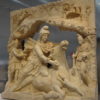
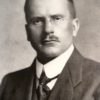
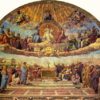
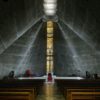


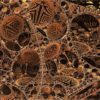
ディスカッション
コメント一覧
まだ、コメントがありません